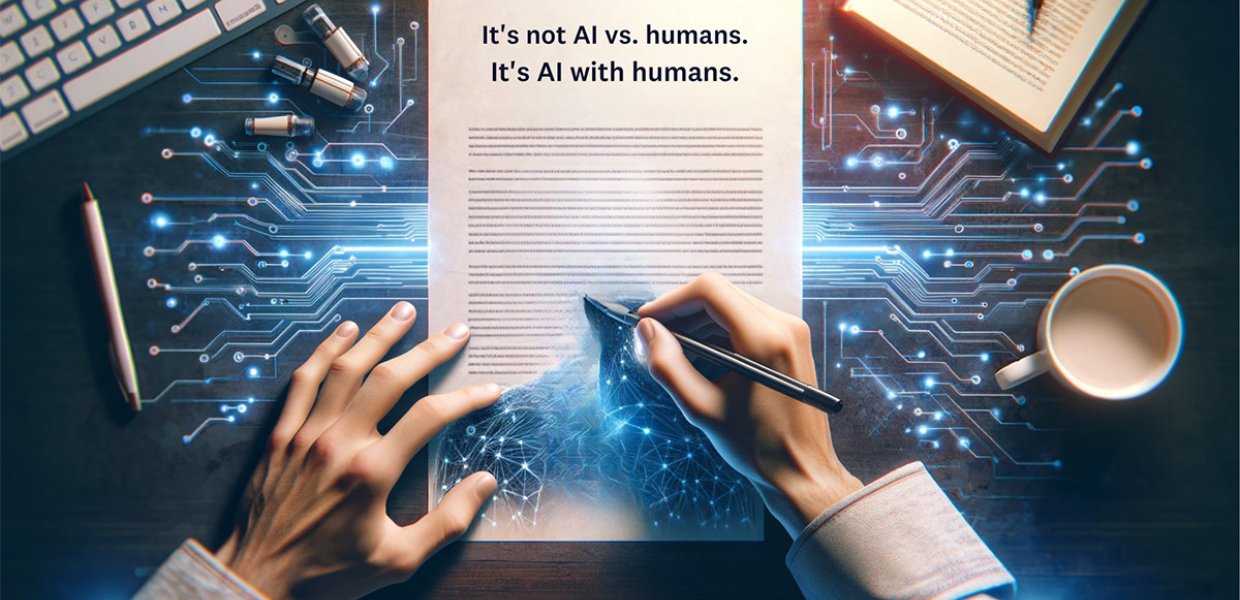It’s as if Gutenberg’s printing press got a serious upgrade — an algorithmic boost. Imagine walking into a modern newsroom and feeling the electricity in the air, a charge not just fueled by a relentless pursuit for authentic stories, but also by the whir of algorithms processing important data at speeds once deemed unimaginable. We stand at an intersection of history and innovation, where artificial intelligence goes beyond support and collaborates with journalists and broadcasters. Yes, the game is changing. But make no mistake: The playbook, the essence of journalism and effective storytelling, is still very much in the hands of those who pen the first and final draft. So, we must ask: What happens when what most professors at Annenberg consider to be traditional journalism meets technology that was at one point considered futuristic but today has become widely used by the consumers of news?
We train our aspiring journalists to find information and verify information. AI does one of these things well, but not both. As we dip into this newly emerging form of mass media, we find ourselves asking how we can harness the robots for good.
Cut to a newsroom where AI takes dispatch logs and spits out headlines: “Weekend Crimes in X Location at Y Time.” Impressive? Sure. But journalism is more than just the nuts and bolts. The numbers that can be crafted into a formulaic sentence tell just part of the story. A journalist can and should contextualize them with additional data, by talking with people and by — gasp! Leaving their desk to see X location with their own eyes. That’s what we teach our students, and it’s a practice that should not stop just because AI can do a lot of the work for us.
The LA Times has a pioneering earthquake bot that can quickly publish basic details about a temblor. The story only gains its soul, depth and texture when a journalist steps in and personalizes the narrative. For example, “It was felt as far away as ____,” or “fire departments reported minor injuries.” So, while we’re spellbound by the efficiency of AI, let’s not forget it’s just half of the recipe — it’s a utility, but to label it as journalism would be to ignore the finer shades of storytelling.
And it’s those finer shades — those nuances — that machines can miss. At USC Annenberg, student journalists learn to trust their senses and instincts to not just grasp the visible or audible, rather understand the intangible mood of a moment. Can a robot feel the pulse of a public meeting, discerning who cried at the podium and why? Can an algorithm capture the excitement when a hometown hero catches the game-winning touchdown against a long-time rival? While AI will enable journalists to effectively simplify data and turn it into stories that reach audiences, they can’t impart the vibe, the emotional richness, that makes a story resonate with audiences.
Yet, when integrated wisely, AI can give journalists the freedom to dive into the more nuanced moments that make stories not just readable, but relatable.
Artificial intelligence’s fusion with design and visuals offers another vista of opportunity. While concerns about AI’s ability to generate art, and even encroach on the creativity process itself are legitimate, think of the limitless potential in collaborative projects. A machine will sketch the initial outlines given some direction, then we can fill in the colors. In a world flooded with information, the design elements of stories have become crucial for capturing audience attention. The dialectics of design, the serendipity of a brainstorming session, the “Aha!” moment of human collaboration — these are aspects of creativity that a machine can’t replicate, but will be enhanced with algorithmic help.
Let’s also acknowledge the Stylebot at Annenberg Media, which functions as an interactive guide to AP stylebook rules, optimizing language while serving as the first line of defense against syntactical faux pas. This ingenuity improves writing quality and amplifies the potential for impactful storytelling. Students love it.
We should neither underestimate AI nor overestimate its prowess. Because at the end of the day, it’s not AI vs. humans. It’s AI with humans. It indicates a future where society benefits from technology, without compromising the unique qualities that make us human. We are not relinquishing authorship of our own narratives; we are expanding the possibilities to be visionaries of our collective futures instead of becoming mere footnotes in the stories spun by our own creations.
Christina Bellantoni is a Pulitzer Prize winner and USC Annenberg professor. Bellantoni serves as the director of Annenberg Media and contributes to the 19th News. With over two decades of journalistic experience, from the LA Times to Roll Call, she has shaped critical political discourse and championed investigative journalism. A regular on national media platforms and a former Harvard Kennedy School fellow, Bellantoni’s impact stretches from academia to the frontlines of news.
Michael Kittilson is a first-year graduate student at USC Annenberg studying public relations and advertising. Kittilson aspires to help solve the world’s toughest messaging and communication problems. His background spans 5 years in various roles that intersect strategic communications, tech, and policy, including work with the U.S. Department of State and national media organizations.
